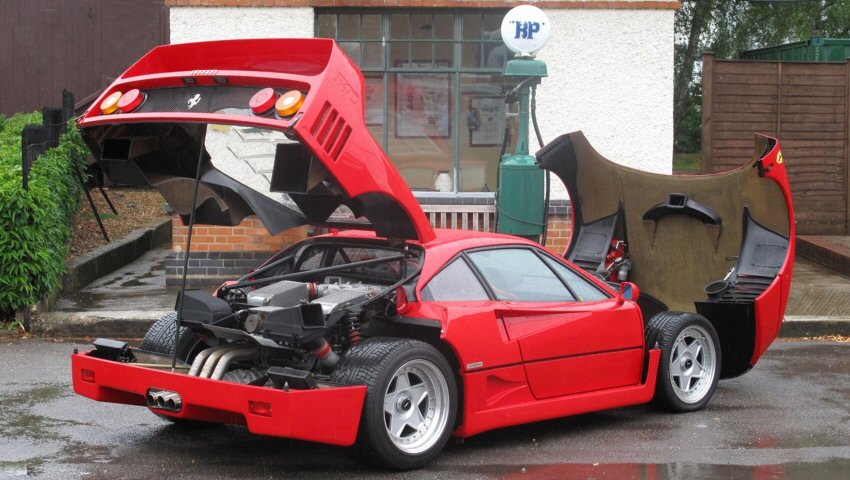
Forced induction
With the arrival of the internal combustion engine just before the turn of the century, engineers started working on improving efficiency, this lead to the Supercharger’s invention. Shortly after, in 1905, the exhaust gas driven compressor was patented and the turbo charger was born. Early tests by General Electric were with turbo charged aero engines. The forced induction gave biplanes the benefit of power at a higher, oxygen poor, altitude.
The turbo charger was steadily developed and used in aircraft, ships and commercial vehicles, predominantly with diesel engines. It was in 1962 that the first passenger car was turbo charged. The American Oldsmobile Jetfire V8, then closely followed by the Chevrolet Corvair Monza in 63. Both these early applications were plagued with unreliability and suffered early termination by the manufacturer.
So why the need for such a device? Well, it improves efficiency and in turn power. Superchargers and turbo chargers work by compressing air into the engine giving a greater amount of oxygen into the cylinders to enable more fuel to be burnt per second. The difference is the supercharger spins the compressor using the engine crankshaft, the turbocharger uses expelled exhaust gasses to spin the compressor.
It was only into the 1970’s that the turbo charger application to motorsport engines started to filter into performance cars of the day. From the first F1 Renault turbo engine in 1977 to Group B rally cars, they all influenced the technology for the road car. One of my favorite early turbo road cars is the BMW 2002 turbo. Produced from 1973 with a turbo charged four, producing 170bhp. The most notable features were its boost characteristics or turbo lag that went something like, nothing, nothing…everything! And its decals, the reversed turbo lettering on the front spoiler allowing the car in front to easily read “turbo” in their mirror and duly move over.
The turbo name in the late seventies was the mark of a quick motor car, and a dodgy aftershave by Faberge for that matter. The iconic Saab 99 Turbo was one of the first European mainstream performance cars with a Garrett AiResearch blower, boosting over 10,000 customers swiftly down the road from 1978-79. Around the same time, Mercedes were also offering turbo diesels rattling away at most European taxi ranks. However, the petrol fueled turbo cars really came on stream in the eighties. Renault, Lotus, Alfa Romeo, Audi, Ferrari and Porsche were all offering turbo charged performance versions. I will always remember my first ride in a Lotus Esprit turbo when I was barely a teenager, the power surge when the turbo spooled up was addictive and my pilot, Caterham Cars salesman Guy, explained how it was harder to haul up for a bend once fully lit. Debatable accuracy but still exciting stuff for a car mad 14 year old.
Having the keys to my Dad’s 1987 Escort RS Turbo for a weekend is one of my cherished memories as a 17 year old license holder. It gave me star status amongst my peers but strangely didn’t give me instant appeal to the girls, maybe I should have bought that Turbo aftershave? Today I have the pleasure of an occasional drive in my sister’s 1989 Porsche 911 (930 model) turbo, one of those always wanted to drive cars. Actually, it’s a reminder how the 911 has improved over the years. This 5 speed example demonstrates that in the wrong hands how easily it could find its way into a hedge. Once you understand how to enhance the boosted power and weight distribution, it is great fun. The Porsche turbo has been a performance icon since 1975 and they even use the Turbo name on their electric Tycan. From my first blown car, an Audi A3 1.8T Sport to my forthcoming GR Yaris I have owned and driven many turbo equipped cars, however I am yet to drive the ultimate, the awesome, twin turbo Ferrari F40.
The turbo charger is now very common on most engines of today so its range topping performance association has been diluted. In fact, a modern naturally aspirated or non-turbo motor, is a celebrated rarity. Some combine both superchargers and turbochargers to improve efficiency of smaller capacity engines, many part of a hybrid power train. Turbo technology has come a long way from the early production cars, with all the downsides virtually eliminated. Drive a modern petrol or diesel and you will not notice it Is turbo charged, but if you have the chance, sample an early turbo car and marvel at the “all or nothing” power delivery provided by that iconic air compressor, the turbo. Start your sampling of used cars on DespperateSeller.co.uk.













